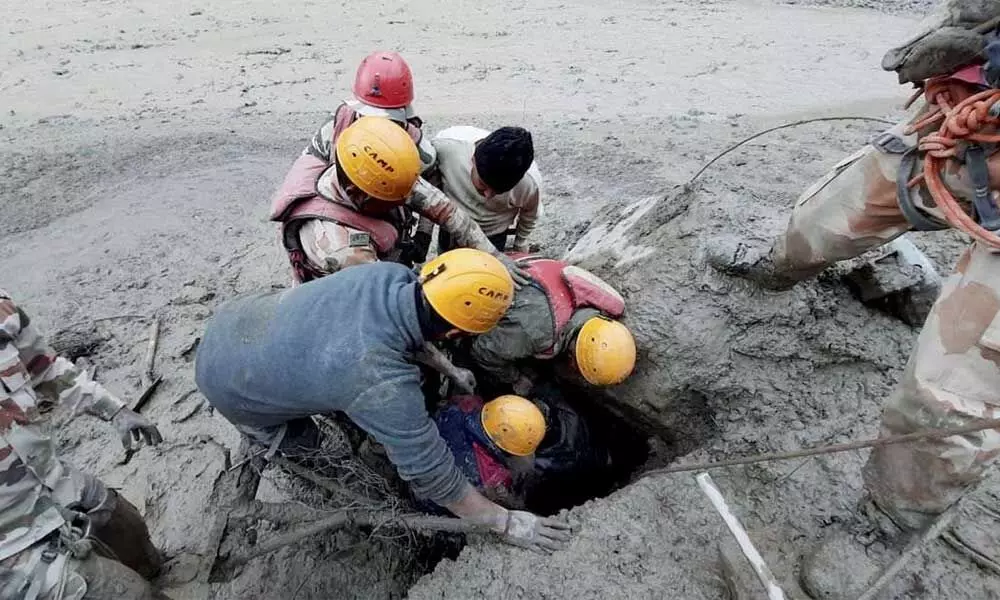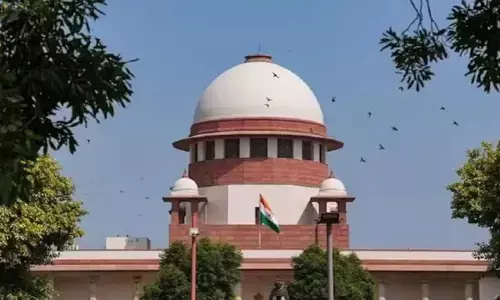An unnecessary Himalayan disaster

An unnecessary Himalayan disaster
There is a huge tectonic place below the land mass of India known as ‘Indian Plate’
There is a huge tectonic place below the land mass of India known as 'Indian Plate'. The rotation of the earth is causing this plate to continually move northward just like any matter moves to the top in a centrifugal machine. The Indian Plate crashes into the Tibetan Plate as it moves to the north. The pressure between these two plates is leading to the continual rise of the Himalayas and also earthquakes in Uttarakhand in particular. Thus, Uttarakhand has been having an earthquake every ten years leaving aside the last 20 years.
A possible reason for earthquake not taking place in the recent period could be that the load of water in the Tehri Reservoir is acting like a cushion between the two plates just as two boxers stop for a moment if a small child stands between them. However, the Indian Plate continues to push against the Tibetan Plate despite this cushion. Consequently, a bigger earthquake may take place in the coming time. Landslides take place due to the tectonic disturbances and these have been putting large amounts of material into the river for thousands of years.
This material has been carried to the plains by the Ganga. The entire land mass of India from Haridwar to Ganga Sagar has been made by such material. Therefore, we should not be under an illusion that such landslides can be prevented. The present tragedy at Rishi Ganga could have been precipitated due to the minute vibrations created by the northward movement of the Indian Plate combined with weakening of the glaciers due to global warming.
The blasting done for making the tunnel of the Tapovan Vishnugad hydropower project did not help. Scientists say that the vibrations from the explosions do not travel very far. However, the minute vibrations may have added to the disaster just as minute doses of homeopathic medicines have a strong effect.
The abovementioned natural work of the Ganga carrying the material requires that the river be allowed to flow freely just as an elephant requires an open road. The hydropower projects make a barrage on the rivers that creates an obstruction to this free flow. The Ministry of Environment had constituted a committee under the Chair of Ravi Chopra on the orders of the Supreme Court after the 2013 disaster.
The committee said the damage in the 2013 disaster took place only above and below the hydropower projects. The committee said the landslide at Kedarnath turned into a disaster not because the rains were exceptional but because the flow of the Mandakini and Alaknanda Rivers was obstructed by a number of under-construction and commissioned hydropower projects. The present landslide has likewise become a disaster because the Rishi Ganga and Tapovan Vishnugad projects had obstructed the flow of the Rishi Ganga and Dhauli Ganga Rivers. These rivers would have carried the material of the landslide to the sea smoothly had there been no obstruction to their flow.
Curiosity is that the government is building these projects even though they have become economically unviable. The cost of electricity made from greenfield hydropower projects is about Rs 7 to Rs 10 at present. Then there are environmental costs of hydropower projects that are not accounted in the price. The National Environment Engineering Research Institute, Nagpur, has found that the Ganga has about 200 types of "phages" that can kill 17 types of disease-creating bacteria. The Yamuna and the Narmada, in comparison, have less than 30 types of phages.
The Ganga also has more copper and radioactive thorium that kill the bacteria. These unique qualities of the Ganga arise when her water absorbs the vegetations and rubs against the stones while flowing rapidly. Fish like Mahseer migrate from the plains to the high Himalayas and clean up the water of pollutants.
The hydropower projects create either a tunnel in which the water of the river is diverted; or they create a reservoir in which the water flows at a very slow speed. In both cases the rubbing action of the water is ended and also the migration of fish is obstructed. I have assessed that the cost of electricity generated from hydropower will become Rs 18 per unit from the proposed Kotlibhel-1B project if the cost of environmental damage is added to the cost of electricity.
Lo! Solar power is available at about Rs 3 per unit against Rs 7 to Rs 18 from hydropower projects. A problem is that solar power is produced in the daytime while the demand is more in the morning and evening which are called "peak" times. However, daytime electricity can be converted into peaking power at a cost of mere 50 paise per unit. Therefore, solar peaking power is available to us a less than Rs 4 per unit.
The Uttarakhand Power Corporation has purchased peaking power from the India Energy Exchange at a price of about Rs 3.50, 4.30 and 2.60 per unit in the last three years. Yet, the government of Uttarakhand continues to make these projects despite such huge cost. The argument is that hydropower projects bring "development." The alternative is that Uttarakhand develops the service sectors. A sanatorium for tuberculosis patients was established at Bhowali near Nainital about a century ago. Idea was that the patients will gain health in the clear and natural surroundings.
The alternative before Uttarakhand is to make software parks, universities, hospitals and computer centres on the banks of the Ganga in the hills so that humankind makes use of the higher psychological qualities of the Ganga and the natural beauty in which she flows. This approach will lead to less environmental burden on the Himalayas and also beget more economic progress. The youth of Uttarakhand will get high salary permanent jobs as nurses, doctors, teachers and programmers in these activities.
At present, they get low-paid jobs for the 10-odd years during the construction of these projects. Curiosity is that the government is bent upon promoting hydropower and disinterested in promoting the service sectors. The reason appears to be that hydropower projects require environment clearance, forest diversion, electricity license and land acquisition in which the government officials have a huge role. The development of services sector is ignored because software giants would not fell on their knees to get environment clearances like hydropower proponents would do. Uttarakhand must give up its misplaced objective of building hydropower, obstructing rivers and inviting disasters.
(The writer is formerly Professor of Economics at IIM, Bengaluru)














